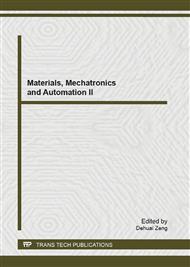p.787
p.793
p.799
p.805
p.809
p.817
p.823
p.830
p.836
Recent Advances in the Study of High Efficiency Novel Film Cooling Holes
Abstract:
The development of a new generation of high performance aircraft turbine jet engine desires gas turbines to be operated at very high rotor inlet gas temperatures. This brings a problem on the effective cooling of turbine blades. Up to now, modified film cooling is still an effective cooling technique. The influence of air-film hole structures on the air-film cooling efficiency cant be ignored. A survey of the research results concerning novel air-film cooling hole about home and abroad were given and high efficiency crescent air-film hole geometry was put forward. Through a comparative study of film cooling characteristic with cylindrical air-film hole and forward diffused air-film hole and crescent air-film hole found effectiveness of the crescent air-film hole was superior to other air-film holes in various blowing ratios. The crescent air-film hole could greatly reduce the kidney vortex intensity, and then enhanced the air-film cooling effectiveness.
Info:
Periodical:
Pages:
830-835
Citation:
Online since:
August 2013
Authors:
Keywords:
Price:
Сopyright:
© 2013 Trans Tech Publications Ltd. All Rights Reserved
Share:
Citation:


